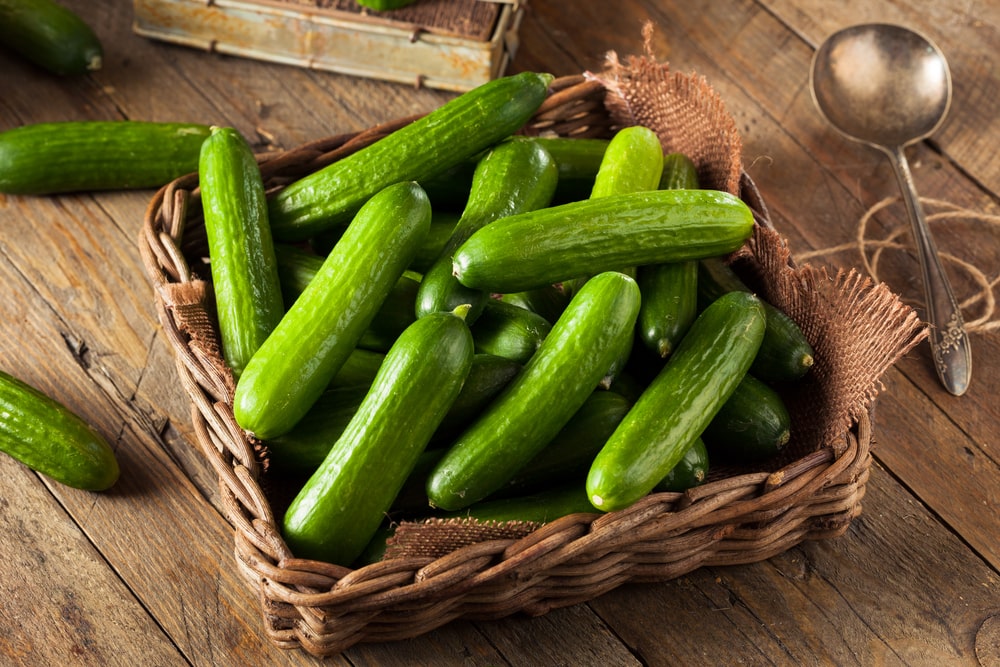Just about everybody’s garden contains cucumber plants, so here’s some interesting information:
- Cucumbers are members of the Cucurbitaceae or cucurbit family. Other family members include watermelons, pumpkins, melons, and squash.
- Cucumbers are native to India. Christopher Columbus is credited with bringing them to Haiti in 1494. From there, it spread to the Americas.
- Cucumbers are 95-96% water and can help keep you hydrated.
- Cucumbers contain vitamins B1, B2, B5, B6, folic acid, calcium, iron, magnesium, phosphorus, potassium, and zinc. Half of a cup has only eight calories!
- A cucumber is botanically considered a fruit.
- The Roman Emperor Tiberius is said to have demanded cucumbers be served daily.
- According to the Guinness Book of World Records, the longest cucumber was 3 feet 8.64 inches!
- A cucumber slice pressed to the roof of the mouth for 30 seconds can freshen your breath!
- Cucumbers can be pureed and applied to a burn, like aloe.
- Cucumbers are one of the most ancient cultivated crops—grown as a food source for over 3000 years.
Grow Your Own
Cucumbers are easy to grow. The seeds sprout fast—seven to ten days. That’s why I usually direct-sow mine—no transplant shock. They need only sunny, well-draining soil.
Most cucumber plants are vines, so expect them to take up some space. I trellis mine and have noticed that getting the vines off the ground reduces the incidence of powdery mildew.
Cucumbers are sun lovers. Anything less than six hours of sun and they won’t bloom well, if at all. They are also heavy feeders. Use a fertilizer with a slightly higher middle number (phosphorus) since that promotes flowering.
Potential Problems
Striped Cucumber Beetles
They winter over in leaf litter (one good reason to keep debris OUT of your garden) and emerge in late May to early June. They can carry a disease called wilt. There is no cure for wilt, so it’s best to remove and destroy the plant if you get it.
Start checking young plants early for them. If you see any, treat with Neem Oil (being sure to spray very early morning or just before dark to avoid hitting pollinators). You can also plant cucumbers at the end of June and possibly miss cucumber beetles altogether.
Spider Mites
If we run into a long stretch of excessively hot, dry weather, we may get spider mites. If you see little yellow spots on the foliage or areas that look faintly bleached, you might have them. Neem Oil is a good pesticide in this case as well, spraying very early morning or just before dark.
Powdery Mildew
This is a whitish film on the foliage. There are several ways to minimize your risk of getting it. Space your plants so they are not touching each other to maximize air circulation. Trellis cucumber vines up—this also maximizes air circulation. When watering, water at the BASE of the plants, avoiding getting the foliage wet—with our high humidity during the summer, we’re just inviting trouble when we get the foliage wet.
One More Thing
Most cucumbers produce both male and female flowers. Female flowers have a swollen ovary at the base and are easily distinguishable from male flowers (on a long skinny stem with NO swelling at the base). When they first start blooming, the male flowers usually open first. Expect this. Later, when the female flowers appear, you’ll get the fruit.
If you don’t get fruit, you may need to step in and pollinate the flowers yourself. Pick a male flower (without the tiny fruit at the base) and touch it to two or three female flowers. You can also use a Q-tip or tiny paintbrush to transfer the pollen. This is best done first thing in the morning.
Enjoy Them
If you have any problems or questions, that’s why we’re here.

